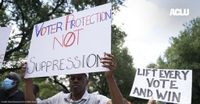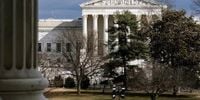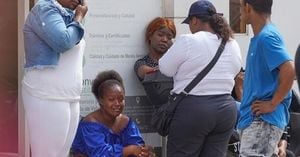On October 15, 2025, the U.S. Supreme Court heard oral arguments in Callais v. Louisiana, a case that could reshape the way race factors into the drawing of congressional districts—not just in Louisiana, but across the country. As justices probed the limits of race-conscious redistricting, the fate of Section 2 of the Voting Rights Act of 1965 hung in the balance, with both sides warning of sweeping consequences for American democracy.
The legal battle centers on Louisiana’s congressional map. In 2024, after a federal court found the state’s 2022 map unconstitutional for diluting Black voting power, Republican lawmakers reluctantly added a second majority-Black district. Before this change, only one of Louisiana’s six U.S. House seats favored a Black candidate, despite nearly a third of the state’s population being Black. But the new map was immediately challenged by white voters and civil rights groups, escalating the dispute to the nation’s highest court.
The issue at stake? Whether Section 2 of the Voting Rights Act—which prohibits voting laws or procedures that discriminate on the basis of race—can continue to require states to consider race when drawing district lines. The justices, especially the conservative majority, seemed receptive to arguments that race-based redistricting might itself run afoul of the Constitution’s guarantees of equal protection and non-discrimination under the 14th and 15th Amendments.
Louisiana Solicitor General Ben Aguiñaga, representing the state, didn’t mince words. “We never wanted to be here in the first place,” Aguiñaga told the justices. “They have placed states in impossible situations where the only sure demand is more racial discrimination for more decades.” He argued that the Constitution “does not tolerate this system of government-mandated racial balancing.” According to reporting by Nexstar Media, Aguiñaga emphasized that the state had fought “tooth and nail” to avoid drawing a second majority-Black district, and would never have done so if not compelled by the courts.
Yet the Trump administration, while siding with Louisiana, suggested a more moderate approach. It urged the Court not to strike down Section 2 entirely but to limit its reach. Specifically, the Justice Department proposed that plaintiffs should have to present a superior alternative map and show an objective likelihood of intentional discrimination, not just racial effects. Principal Deputy Solicitor General Hashim Mooppan argued that the current legal framework—known as the Gingles test, established in 1986—often conflates race and party, muddying the purpose of Section 2. “What’s going on under Gingles now is not actually figuring out whether there’s an unfair effect based on race; it’s figuring out whether there’s an unfair effect based on party,” Mooppan said, as reported by Nexstar Media.
The Gingles test requires plaintiffs to prove three things: that a minority group is large and compact enough to form a majority in a district, that it is politically cohesive, and that the majority votes as a bloc to usually defeat the minority’s preferred candidate. This legal standard has been the backbone of Section 2 litigation for decades, empowering minority groups to challenge maps that dilute their voting power. But conservative justices, including Chief Justice John Roberts and Justice Brett Kavanaugh, appeared open to revisiting or even modifying this precedent.
Justice Kavanaugh, in particular, pressed the idea that race-based remedies should not last forever. “This court’s cases in a variety of contexts have said that race-based remedies are permissible for a period of time. Sometimes for a long period of time, decades in some cases,” he said. “But that they should not be indefinite and should have an end point.” His comments echoed a broader skepticism among the Court’s conservatives about the ongoing necessity of race-conscious districting.
Justice Amy Coney Barrett wondered aloud whether the Court needed to modify Gingles or simply clarify it, noting, “Gingles is a 40-year-old precedent. A big ask to change it.” The justices also questioned whether the creation of Louisiana’s second majority-Black district violated the 14th or 15th Amendments—a sign that the Court could issue a ruling with constitutional ramifications.
Liberal justices, meanwhile, were sharply critical of the push to curtail Section 2. Justice Sonia Sotomayor, for example, said of the proposed changes, “The bottom line is, just get rid of Section 2.” She argued that race has always played a role in redistricting and that the government’s attempt to “tease it out” ignores the reality that race is sometimes used to help marginalized communities. Justice Elena Kagan pointed out that some of the challengers’ arguments had been “specifically rejected by this court over many decades and three years ago.”
Outside the courthouse, the stakes felt just as high. Hundreds gathered for a “Fight for Fair Maps” rally, led by groups like the NAACP, the League of Women Voters, and the National Urban League. The Rev. Shavon Arline-Bradley, president and CEO of the National Council of Negro Women, told the crowd, “Every time you face opposition, just look at it and say, ‘No weapon against us shall prosper.’ Section 2 will be intact after they do their work inside that Supreme Court.” Fletcher Johnson, a Baltimore resident in attendance, voiced his fears about voter suppression: “We’re losing the country really fast, and we got to fight for every inch of it. So this decision here is going to be critical to our voting rights, and they’re trying to dismantle everything that we’ve worked for.”
Janai Nelson, president of the NAACP Legal Defense Fund, argued before the Court that Section 2 is the “sole reason there is Black representation in Louisiana.” She warned that undermining it would roll back hard-won progress. “We only have the diversity that we see across the South, for example, because of litigation that forced the creation of opportunity districts under the Voting Rights Act,” Nelson said. “But it also isn’t a permanent remedy. It corrects itself over time, and it’s only triggered when those extreme conditions exist.”
Fair Fight Action, a progressive voting rights organization, predicted dire consequences if Section 2 is weakened: up to 19 majority-Black districts nationwide could be redrawn to favor Republicans. U.S. Rep. Troy Carter, D-New Orleans, put it bluntly at a post-argument news conference: “For decades, the court’s conservative majority has chipped away at this landmark civil rights law. Now Section 2, which prohibits voting practices that discriminate based on race, is on the chopping block.”
Louisiana’s Republican leaders, including Gov. Jeff Landry, have called for the courts to step back from redistricting, arguing that it should be left to elected representatives. “What you’ve seen is that the more the court gets involved in a legislative process, the more it entangles itself in its own opinions,” Landry told The Hill. “I hope that this is the end of the tracks.”
With a decision expected by June 2026, the outcome could range from upholding Louisiana’s current map to requiring a new map with two majority-Black districts—or, in the most sweeping scenario, scaling back Section 2 and allowing states to reduce or eliminate majority-minority districts altogether. The Louisiana Legislature is already considering a special session to adjust election deadlines in anticipation of the ruling. Whether the decision will come in time to affect the 2026 midterms remains uncertain, but its impact will be felt far beyond the Pelican State.
As the justices deliberate, the nation waits to see whether the Voting Rights Act will emerge intact or fundamentally altered—a question that could shape the future of American elections for years to come.





